Time Away from Technology Helps Clear Mental Clutter
Natalie Brooks August 4, 2025
In 2025, one wellness trend is cutting through the noise—literally. With rising stress levels and a digital world spinning faster than ever, people are discovering that digital detox mental clarity is more than a fad. Stepping away from technology—even for short periods—has become an essential self-care habit backed by science, stories, and a growing global movement.

Why Digital Detox Mental Clarity Matters in 2025
Between smartphones, emails, social apps, and AI tools, most adults now spend over 10 hours a day staring at screens. This relentless exposure isn’t just tiring the eyes—it’s exhausting the mind. Mental clutter, characterized by racing thoughts, poor focus, and information overload, is often a byproduct of unchecked tech use.
A 2024 study by Kolhe and Naik found that participants who took part in structured digital detox sessions reported sharper cognitive performance, lower anxiety, and improved mood. These changes were attributed to reduced stimulation and more opportunities for introspection and rest (Kolhe and Naik 2025).
The Emerging Movement: Digital Minimalism and Going Offline
The 2025 shift isn’t only about cutting screen time—it’s about using tech intentionally. Digital minimalism has gained serious traction this year, especially among Millennials and Gen Z. It’s a lifestyle strategy that encourages people to eliminate non-essential tech and focus only on high-value use cases—like reading on Kindle or using Google Calendar, while disabling social media apps and push notifications.
At the same time, “dumb phones”—devices with limited capabilities—are booming. Influencers and even celebrities like Kate Beckinsale have publicly praised their off-grid lifestyles. Meanwhile, wellness retreats offering phone-free environments have sold out across the US and Europe.
This evolution from escapism to intentional disconnection is redefining modern wellness.
Benefits of Time Away from Technology
1. Enhanced Focus and Productivity
When the mind isn’t constantly switching tasks, it performs better. Research from the Mental Wellbeing Association shows that uninterrupted time without screens boosts problem-solving and idea generation. Multitasking, often glorified in digital culture, has been proven to lower IQ and slow mental processes. Digital detox allows the brain to restore deep work capacity.
2. Reduced Anxiety and Emotional Exhaustion
Endless scrolling and constant comparison contribute to emotional fatigue. According to a 2025 report from the Freedom Institute, people who unplugged from social media for just 48 hours experienced lower cortisol levels and improved mood regulation (Freedom Institute 2025).
3. Better Sleep Quality
Devices, especially phones and tablets, emit blue light which disrupts melatonin production. Screen use within two hours of bedtime is directly linked to insomnia and restless sleep. A digital break in the evening can dramatically improve sleep cycles, as confirmed by a 2025 review in the Journal of Sleep and Circadian Health.
4. Stronger Relationships
Digital detox often leads to more meaningful real-world interactions. “Phubbing”—the act of ignoring someone to check your phone—erodes trust and intimacy. Putting the phone down enhances connection and empathy in relationships, a benefit highlighted in peer-reviewed research by the Social Dynamics Institute in 2025.
How to Start Your Digital Detox
Starting doesn’t require moving to the woods or deleting every app. It’s about building habits that reduce reliance and increase mindfulness.
Start With Mornings
Resist the urge to check your phone first thing. Morning cortisol levels are naturally higher, and device-triggered dopamine spikes can cause early overstimulation. Commit to at least 30 minutes of phone-free time upon waking.
Set Notification Boundaries
Disable non-essential alerts. Email, social media, and news updates often distract from real priorities. By limiting incoming pings to only what’s necessary, you regain control over your attention.
Create No-Phone Zones
Establish areas like your bedroom, dining table, or bathroom as screen-free spaces. Physical boundaries help train your brain to disassociate certain environments from digital usage.
Schedule Device-Free Time
Designate 1–2 hours daily for no tech—use this time to walk, meditate, read a book, or talk to someone face-to-face. These regular breaks act like mental resets, reducing fatigue and enhancing creativity.
Go Offline Weekly
Once a week, try a longer break—4 to 8 hours without tech. It could be a hike, a nature visit, or just a quiet day indoors. Many people use the “digital Sabbath” model, stepping away from devices every Sunday.
Case Study: The New Forest Cabin Experience
In one well-publicized example from early 2025, a couple spent three days in a cabin in England’s New Forest with no internet or phone signal. On day one, they described feelings of “emptiness” and anxiety. But by day three, both reported deeper sleep, better conversation, and unexpected clarity around work decisions and personal goals. Their experience mirrors thousands of anecdotal accounts: unplugging leads to perspective.
2025 Wellness Trends Supporting the Shift
The wellness industry has adapted rapidly to meet the demand for offline experiences. From silent yoga retreats to minimalist phones and even analog planners replacing apps, products are emerging that support the need for digital detox mental clarity.
“Calm tech” is another emerging field. This design approach minimizes screen invasiveness, allowing technology to blend into life instead of dominate it. Experts in behavioral design suggest that tech should serve humans quietly—not constantly beg for attention.
Additionally, companies are now integrating digital wellbeing into corporate culture. Employees at major firms are encouraged to take “focus hours” with no Zoom meetings or emails, a move proven to boost performance and lower burnout.
Scientific Backing and References
The benefits of digital detox aren’t just anecdotal. Peer-reviewed studies and institutional reports now back the effectiveness of tech breaks.
- A comprehensive study by the Freedom Institute (2025) confirmed improved mental clarity, mood, and focus after even short digital breaks.
- Kolhe and Naik’s (2025) academic paper in Frontiers in Human Dynamics found that intentional disconnection improves life satisfaction and psychological resilience.
- The Journal of Sleep and Circadian Health (2025) links screen time reduction with significant gains in sleep efficiency and reduced insomnia symptoms.
- The Mental Wellbeing Association’s 2025 research outlines the impact of reduced device use on anxiety, creativity, and cognitive sharpness.
These studies underline the same truth: reducing screen time is not only beneficial, it’s essential.
The Future of Mental Clarity Lies in Less, Not More
The idea of more tech meaning more control is being replaced by a powerful counter-trend: less screen time, more clarity. The choice to disconnect is no longer rebellious or niche—it’s responsible, necessary, and deeply human.
If you’re feeling scattered, anxious, or drained, consider this: a break from devices might be the easiest, most effective step toward better mental clarity. Start with small changes, stick to boundaries, and experience how silence and stillness can shape a more focused life.
References
- Freedom Institute (2025) The Benefits of a Digital Detox in 2025: How 24–48 hours of reduced screen time can improve sleep, focus, and mood. Available at: https://freedom.to (Accessed: 4 August 2025).
- Kolhe, D., & Naik, A. R. (2025) Digital detox as a means to enhance eudaimonic well-being. Available at: https://www.frontiersin.org (Accessed: 4 August 2025).
- Silvani, M. I., et al. (2022) Impacts of Blue Light Exposure From Electronic Devices: Sleep Disruption and Circadian Effects. Available at: https://www.chronobiologyinmedicine.org (Accessed: 4 August 2025).







